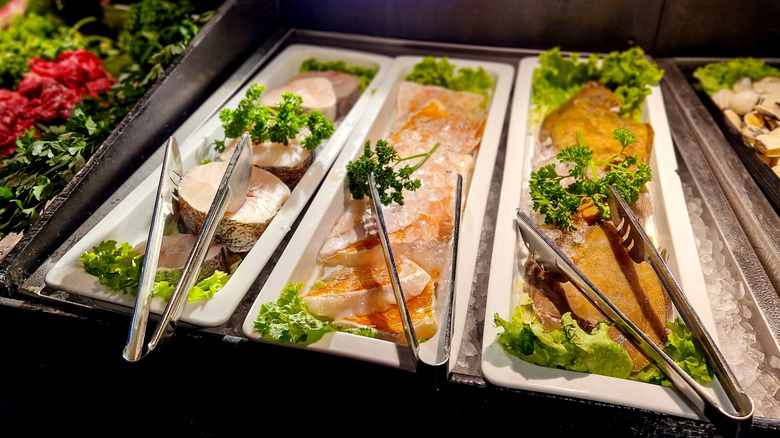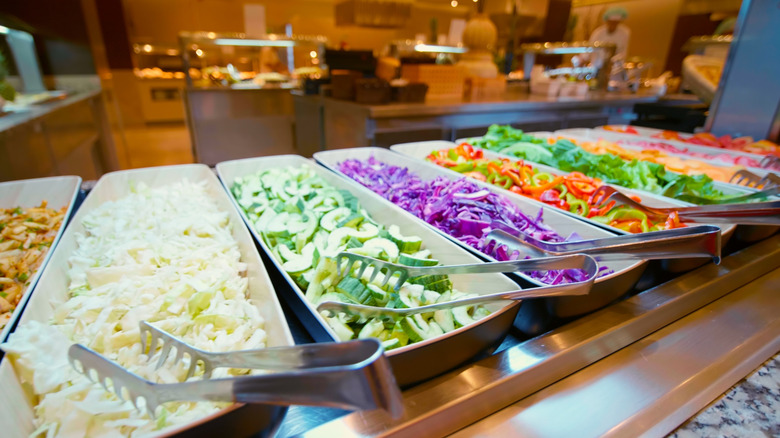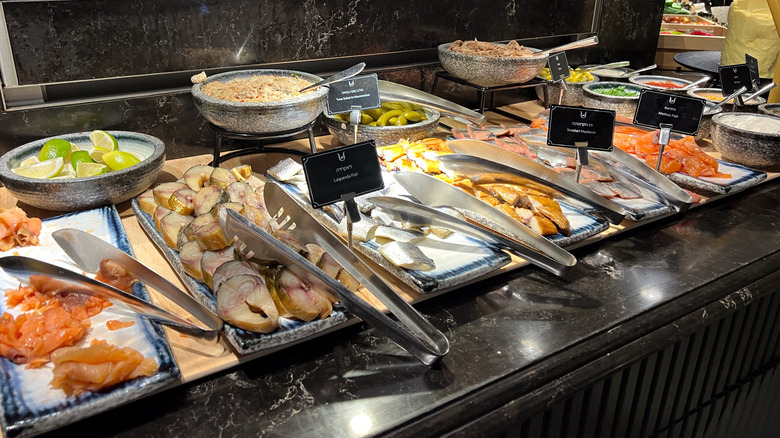Buffet Serving Utensils Are Small And Annoying For Such A Sneaky Reason
Anyone who's been to a buffet knows the struggle. You've got your plate ready, eyeing that mountain of shrimp or the prime rib carving station, only to be met with the tiniest tongs known to man. We were so frustrated that we exposed all the worst all-you-can-eat buffet secrets and began asking questions. Why are the utensils at buffets always so frustratingly small? Is it some kind of culinary joke or a test of patience? A way to weed out the weak and make lines longer?
Not quite. As it turns out, the size of buffet utensils is a strategic move designed to slow you down and subtly guide your food choices. Buffets thrive on balancing cost and customer satisfaction, and one of the ways they do this is by using psychological tricks to ensure you're not loading up on the most expensive items too quickly. From small tongs to awkward ladles, these utensils are part of a much bigger buffet strategy that has been carefully crafted over decades to maximize profits.
The economics of tiny tongs
Buffets may seem like a free-for-all, but they are designed with precision. Every detail, from plate size to the placement of dishes, is calculated to encourage customers to eat more of the cheaper foods — think bread, pasta, rice, and vegetables, while making it just inconvenient enough to overindulge in pricier items like seafood and premium cuts of meat. The use of smaller serving utensils is a key part of this strategy, slowing down the serving process and discouraging people from taking too much at once, which often ends up in food waste.
It's all about portion control without customers realizing they're being controlled. By making you scoop mac and cheese with a tiny spoon or grab shrimp one at a time with mini-tongs, buffets nudge you toward variety rather than excess, ensuring that the most expensive foods don't disappear too quickly. Buffets have perfected this strategy over time, borrowing techniques from the original smorgasbord-style dining of Sweden and adapting them into the modern all-you-can-eat format. Even the placement of certain dishes follows a psychological pattern, tricking your brain into filling up on lower-cost foods before you reach the pricier ones.
Other sneaky buffet strategies
The small utensil trick is just one of many psychological tactics at play at buffets. The layout of the food stations is another big one; they are cheaper, and filling foods like bread and pasta are placed at the beginning, so by the time you reach the carving station, your plate is already mostly full. Even the height of trays plays a role, making certain items appear more abundant (or limited) depending on where they're placed.
And let's not forget plate size: Most buffet plates are larger than standard dinner plates to encourage piling on food, but not so large that you can grab everything you want in one trip. This ensures people take multiple trips, often filling up on the cheaper foods along the way.
Ultimately, while buffets may seem like the ultimate deal, the house always wins. These small, sneaky tactics help buffets keep costs down while still making customers feel like they're getting their money's worth. So next time you're struggling with those tiny tongs, just know it's not just bad utensil design; it's buffet economics at work and put our all-you-can-eat strategy to the test.


